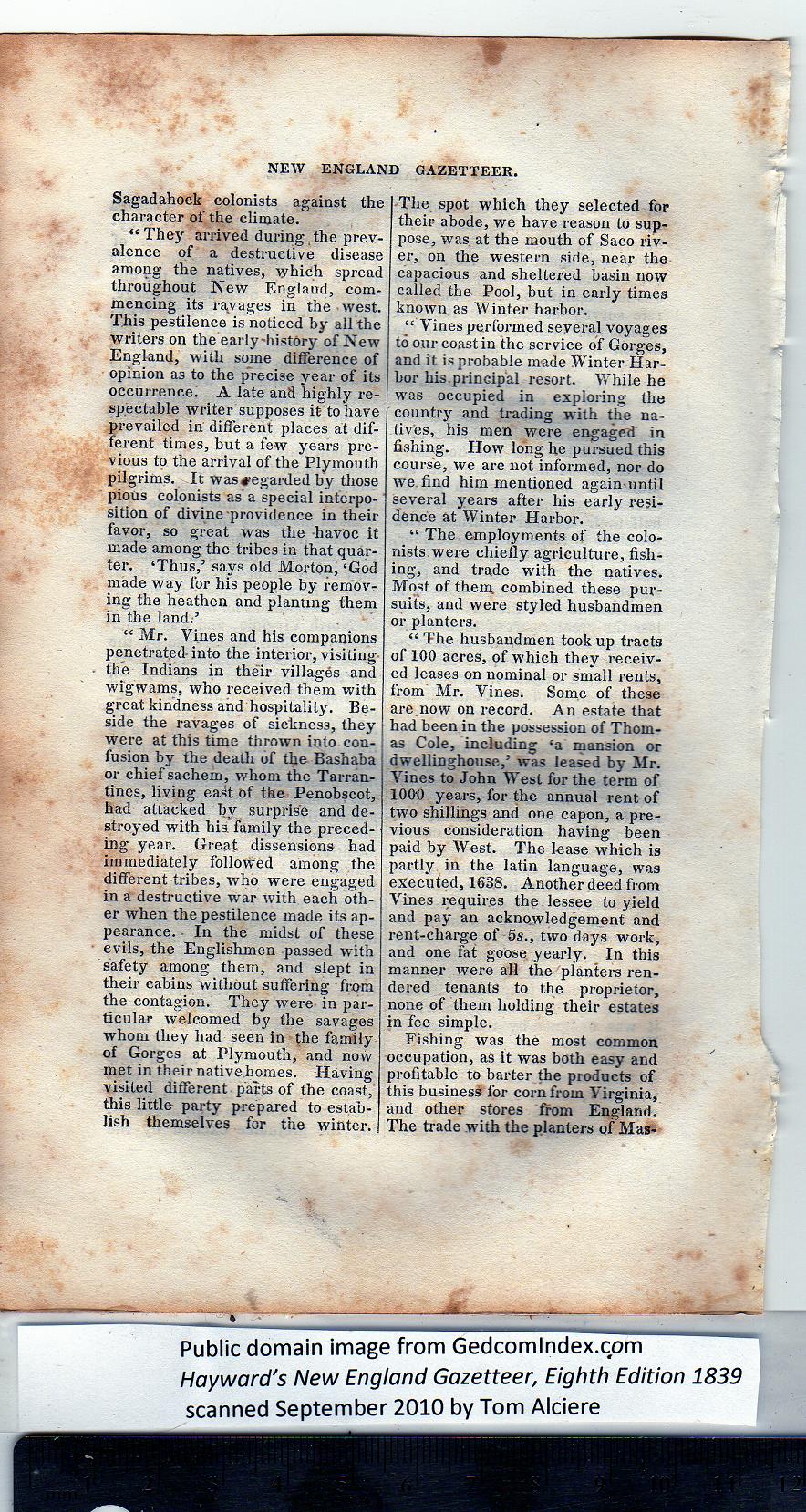|
Sagadahock colonists against the
character of the climate.
“They arrived during the prev-
alence of a destructive disease
among the natives, which spread
throughout New England, com-
mencing its rayages in the west.
This pestilence is noticed by all the
writers on the early-histdry of New
England, with some difference of
opinion as to the precise year of its
occurrence. A late and highly re-
spectable writer supposes it to have
prevailed in different places at dif-
ferent times, but a few years pre-
vious to the arrival of the Plymouth
pilgrims. It was regarded by those
pious colonists as a special interpo-
sition of divine providence in their
favor, so great was the -havoc it
made among the tribes in that quar-
ter. ‘Thus,’ says old Morton, ‘God
made way for his people by remov-
ing the heathen and planting them
in the land.’
“ Mr. Vines and his companions
penetrated- into the interior, visiting
the Indians in their villages and
wigwams, who received them with
great kindness and hospitality. Be-
side the ravages of sickness, they
were at this time thrown into con-
fusion by the death of the Bashaba
or chief sachem, whom the Tarran-
tines, living east of the Penobscot,
had attacked by surprise and de-
stroyed with his. family the preced-
ing year. Great dissensions had
immediately followed among the
different tribes, who were engaged
in a destructive war with each oth-
er when the pestilence made its ap-
pearance. In tbe midst of these
evils, the Englishmen passed with
safety among them, and slept in
their cabins without suffering from
the contagion. They were in par-
ticular welcomed by the savages
whom they had seen in the family
of Gorges at Plymouth, and now
met in their native homes. Having
visited different parts of the coast,
this little party prepared to estab-
lish themselves for the winter. |
The spot which they selected for
their abode, we have reason to sup-
pose, was at the mouth of Saco riv-
er, on the western side, near the
capacious and sheltered basin now
called the Pool, but in early times
known as Winter harbor.
“ Vines performed several voyages
to our coast in the service of Gorges,
and it is probable made Winter Har-
bor his.principal resort. While he
was occupied in exploring the
country and trading with the na-
tives, his men were engaged in
fishing. How long he pursued this
course, we are not informed, nor do
we. find him mentioned again until
several years after his early resi-
dence at Winter Harbor.
“ The employments of the colo-
nists were chiefly agriculture, fish-
ing, and trade w7ith the natives.
Most of them combined these pur-
suits, and were styled husbandmen
or planters.
“ The husbandmen took up tracts
of 100 acres, of which they receiv-
ed leases on nominal or small rents,
from Mr. Vines. Some of these
are now on record. An estate that
had been in the possession of Thom-
as Cole, including ‘a mansion or
dwellinghouse,’ was leased by Mr.
Vines to John West for the term of
100*0 years, for the annual rent of
two shillings and one capon, a pre-
vious consideration having been
paid by West. The lease which is
partly in the latin language, was
executed, 1638. Another deed from
Vines requires the lessee to yield
and pay an acknowledgement and
rent-charge of 5s., two days work,
and one fat goose yearly. In this
manner were all the planters ren-
dered tenants to the proprietor,
none of them holding their estates
in fee simple.
Fishing was the mo3t common
occupation, as it was both easy and
profitable to barter the products of
this business for corn from Virginia,
and other stores from England.
The trade w ith the planters of Mas- |
